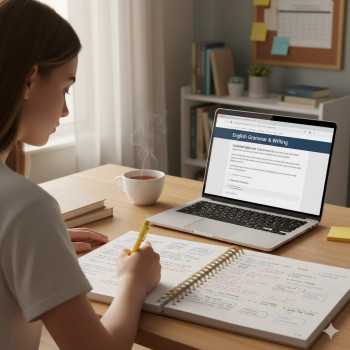Why tracking your mistake patterns across SAT practice tests changes everything
Let me start with a small, very relatable scene: you finish another full-length SAT practice test, sit back, and stare at your score for a few minutes — proud, bemused, or a little disappointed. You highlight the questions you missed, maybe look at the answer explanations, and move on. Weeks later you wonder why the same sorts of errors keep showing up. Sound familiar?
That moment — when you realize the mistakes repeat like a stubborn song chorus — is the exact point where tracking mistake patterns becomes powerful. Tracking mistakes is more than counting wrong answers. It’s a diagnostic tool that reveals predictable habits, knowledge gaps, timing issues, and test-day tendencies that raw scores hide.
What I mean by “mistake patterns”
A mistake pattern is a recurring type of error that shows up across multiple practice tests. Examples include:
- Careless arithmetic errors in the Math section.
- Misreading comparative adjectives or quantifiers in Reading, like confusing “more than” with “at least”.
- Running out of time on the last 10 questions of Writing and Language, leading to guesses.
- Consistently choosing distractors in Sentence Completion because of parallelism issues.
These patterns are not random. They are clues. They tell you something about how you take the test, not just what you know. And once you can read those clues, you can change the way you study and the way you take the test.
Why raw score patterns aren’t enough
A single practice test and a score sheet can make you feel like your problems are either too big or too small. Raw scores mask the difference between:
- a conceptual gap (e.g., weak algebra fundamentals), and
- a tactical habit (e.g., skipping steps and making careless mistakes).
Two students could both miss 12 questions and have the same score, but one might be missing foundation-level concepts while the other loses points because she guesses on the last five reading questions due to poor pacing. Fixing each situation requires different strategies.
How tracking mistakes creates leverage
Imagine having a map that points directly to the smallest changes that will produce the biggest score improvements. That’s what mistake-pattern tracking does. It gives you leverage in four practical ways:
- Precision diagnosis: Instead of vaguely studying “math,” you know whether to focus on quadratic manipulation, graph interpretation, or careless arithmetic.
- Efficient practice: Spend time where it matters. If careless errors cost you more points than content gaps, a week of timed accuracy drills can be more effective than learning new content.
- Targeted test strategies: Build micro-habits (like reading the last line of a passage before questions) that directly address recurring mistakes.
- Progress tracking: When you log mistakes over time, you can measure improvement in specific areas rather than relying on a noisy, aggregate score.
A quick real-world comparison
Two students, Maya and Jason, both score a 1220 on a practice test. They track mistakes.
- Maya discovers 60% of her mistakes are in algebraic manipulation and two-variable systems. She spends the next four weeks on targeted review and scores 1300.
- Jason discovers his errors are mostly careless misreads and timing—he rushes at the end of sections and misses obvious answers. He practices pacing and accuracy and also reaches 1300, but in a different way.
Both gained 80 points, but their study plans — and the minimal actions that moved the needle — were completely different. That clarity came from tracking patterns.
Simple systems to start tracking mistakes today
Tracking doesn’t need to be complicated. Here are several methods you can use depending on your style and available time.
1) The Error Log (spreadsheet)
Use a simple spreadsheet with the following columns:
- Test date
- Section and question number
- Question type (e.g., Algebra I, Data Interpretation, Command of Evidence)
- Mistake type (e.g., conceptual, careless, timing, misread)
- Why it happened (brief note)
- Fix attempted (strategy or content reviewed)
- Outcome on next practice (did it repeat?)
This is the single most practical habit for long-term improvement. Below is an example table you can adapt directly.
| Test Date | Section | Q # | Question Type | Mistake Type | Root Cause | Planned Fix |
|---|---|---|---|---|---|---|
| 2025-03-12 | Math No Calc | 15 | Linear equation | Careless | Forgot to distribute negative sign | Practice distribution drills + checklist |
| 2025-03-12 | Reading | 24 | Inference | Misread | Skipped opening sentence of second paragraph | Train on passage mapping + underline topic sentence |
| 2025-03-12 | Writing | 9 | Parallelism | Conceptual | Confused verb tense agreement | Review parallelism rules + practice sets |
2) Paper-based index cards
If you prefer analog, keep index cards for recurring mistakes. Write the question type on the front and the root cause plus your checklist on the back. Flash these cards during commute time or before bed.
3) The weekly review ritual
Once a week, read your error log and look for clusters. Ask simple questions:
- Which question types I missed most this week?
- Were my errors concentrated at the end of sections (timing) or spread evenly?
- Which fixes reduced repeat errors, and which didn’t help?
How to classify mistakes so the patterns are meaningful
Not every wrong answer fits neatly into a box. The point of classification is not perfection but clarity. Here’s a practical taxonomy I recommend:
- Conceptual: You didn’t know or misapplied the underlying principle.
- Procedural: You understood the concept but used the wrong method.
- Careless: Simple arithmetic errors, sign errors, mis-copies, or misreading numbers.
- Tactical: Test-taking strategy errors — poor guessing, skipping, or bad pacing.
- Comprehension/Misread: Mistakes caused by misunderstanding a passage or the literal wording of a question.
- Format/Interface: Errors caused by mis-marking the answer, bubbling mistakes, or calculator misuse.
When you tag errors consistently across tests, you can run simple counts to see which category costs you the most points.
Example: Turning raw counts into action
Suppose over four practice tests you miss 40 questions. After tagging, you find:
- 12 Careless
- 10 Conceptual
- 8 Tactical
- 6 Misread
- 4 Procedural
That breakdown immediately tells you: a majority of problems are fixable without relearning the whole syllabus. A focused month on accuracy drills and a pacing strategy could recover 8–12 points quickly, while targeted concept review will close the conceptual gaps.
Practical drills to erase common patterns
Knowing patterns is half the battle. The other half is applying the right drill. Here are short, actionable drills mapped to common mistake patterns.
Careless errors
- Slow practice: Redo problems at 70% of your usual speed and check every step aloud.
- Two-check rule: Before submitting, re-scan for sign errors, dropped negatives, and copied numbers.
- Highlight numbers: For multi-step math, box or underline the numbers you carry forward.
Pacing and tactical mistakes
- Section splits: Divide each section into time blocks and practice finishing each block consistently.
- Blind review: After practice, mark which questions you guessed—train to reduce guesses.
Comprehension/misread mistakes
- Passage mapping: Summarize each paragraph in one sentence before answering questions.
- Question rephrase: Rewrite the question in your own words before looking at answer choices.
Conceptual gaps
- Micro-sessions: Break a weak topic into 10–15 minute targeted lessons and practice 5 problems in a row.
- Teach-back: Explain the concept out loud as if teaching a friend — gaps show up immediately.
How often should you track and when to change strategy
Track every practice test and take a weekly snapshot of patterns. But be smart about when to change course:
- If a mistake type repeats across 3+ tests, change your study approach for that category.
- If a planned fix fails twice in a row, iterate: try a different drill or ask for outside help.
- Celebrate progress: even a 25–50% reduction in a recurring error type is a big win and worth reinforcing.
Sometimes a targeted shift — like adding timed micro-tests to fix pacing — will produce immediate score gains. Other times, conceptual work pays off over weeks. The error log helps you choose.
How personalized tutoring and AI can speed this up (naturally)
One of the fastest ways to accelerate pattern-based improvements is to pair systematic tracking with personalized guidance. Tutors can see patterns you miss and suggest precise, small changes that compound. For instance, with Sparkl’s personalized tutoring, students get 1-on-1 guidance, tailored study plans, and expert tutors who help translate logged patterns into action. Sparkl also offers AI-driven insights that can flag recurring mistake clusters and suggest drills — but only as a supplement to human tutoring, not a shortcut.
That combination — your error log plus a tutor who interprets it — turns scattered practice into a guided campaign. Tutors can also help you avoid the common trap of overfitting to practice-test idiosyncrasies (more on that below).
Common pitfalls and how to avoid them
Tracking mistakes is powerful, but only if done thoughtfully. Here are traps students commonly fall into.
- Over-tagging: You try to classify every micro-reason for a mistake and get bogged down. Keep tags simple and consistent.
- Bias to content: You assume every wrong answer means you need more content. Sometimes you need strategy or patience.
- Cherry-picking data: Focusing on one spectacular test rather than trends across several tests can mislead you.
- Fix fatigue: Changing fixes too often. If a strategy has a reasonable trial period (e.g., two practice tests) give it time to work.
Overfitting example
Suppose on one practice test you miss several questions about coordinate geometry because the test included an unusual figure. If you overhaul your entire study plan to focus on coordinate geometry, you’ve overfit to one test’s quirks. Tracking across multiple tests protects you from that mistake.
A realistic 8-week plan using mistake tracking
Here’s a step-by-step plan you can follow. It assumes you’re already taking full-length tests on a regular schedule.
- Week 1: Take a baseline full-length test and build your error log immediately after review.
- Week 2: Implement fixes for the top two recurring mistake categories; take a targeted practice set for those topics.
- Week 3: Take another full-length test; update the log and measure change. If careless errors persist, add slow-practice drills.
- Week 4: Continue targeted practice; introduce timed micro-tests to address pacing.
- Week 5: Bring in an outside perspective — a tutor or a study partner — to review your error log and suggest refinements. Sparkl’s tutors, for example, can translate your log into a personalized plan and show AI-backed insights to prioritize drills.
- Week 6: Iterate on your top fixes and keep logging. Start increasing test frequency as you get closer to the exam date.
- Week 7: Do a full diagnostic: are the same patterns still costing points? If so, double down on the smallest, most effective drills.
- Week 8: Final polishing. Use the log to inform a light review schedule and a test-day checklist that addresses your personal pitfalls.
Small daily habits that amplify tracking
Consistency matters. These small habits will make your error log more actionable:
- Log mistakes immediately after review — clarity fades fast.
- Keep a short evening note on whether you felt rushed, tired, or distracted during practice. Context helps interpretation.
- Revisit one old mistake each day and redo it under test conditions.
Using your environment
Study in conditions that mimic test day at least once a week: same time of day, minimal interruptions, and the same type of breaks. Mistake patterns sometimes emerge only under authentic pressure.


Final thoughts: tracking is not punishment — it’s a compass
Students often view mistake tracking as a tedious record of failure. It’s the opposite. Mistakes are directional signals: they show you where tiny improvements yield outsized gains. A carefully kept error log is like a compass for your SAT journey. It helps you stop wasting hours on low-impact study and start investing time where it counts.
If you want to accelerate the process, a coach or a tutor can help you read the map faster. Personalized tutoring — with targeted 1-on-1 guidance, tailored study plans, and data-driven insights — can translate pattern recognition into a step-by-step plan that feels manageable and motivating. Even light use of AI-driven insights can surface trends you might overlook, but the human touch helps decide which small changes will stick.
Start small. Track your next practice test with a simple spreadsheet or even three columns on paper: Question, Why it was wrong, and What I will do next. After three tests you’ll start to see a pattern. At that point, the work becomes enjoyable: you’re not guessing anymore. You’re solving a puzzle, and every solved pattern is a small victory toward your target score.
Be curious, be patient, and remember: consistent, focused work beats random hard work every time. Your mistakes are not setbacks — they are the clearest instructions on how to improve.
Good luck, and happy tracking.















No Comments
Leave a comment Cancel